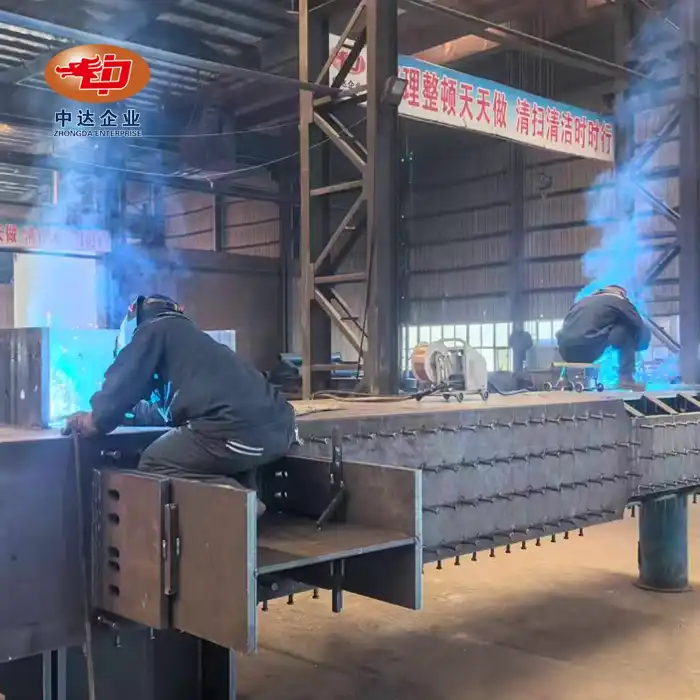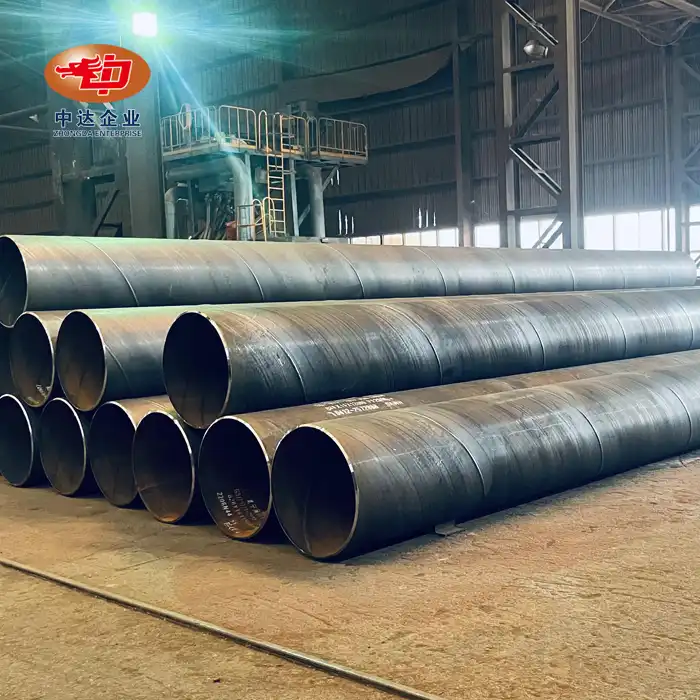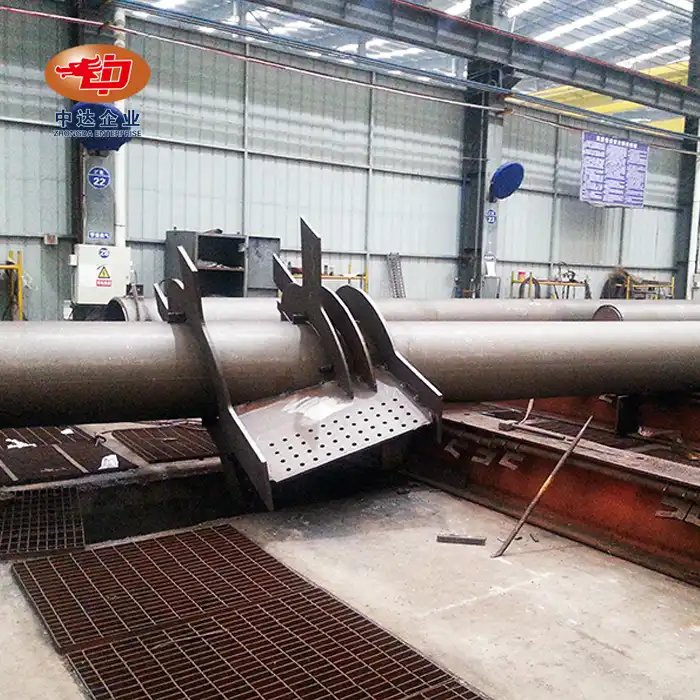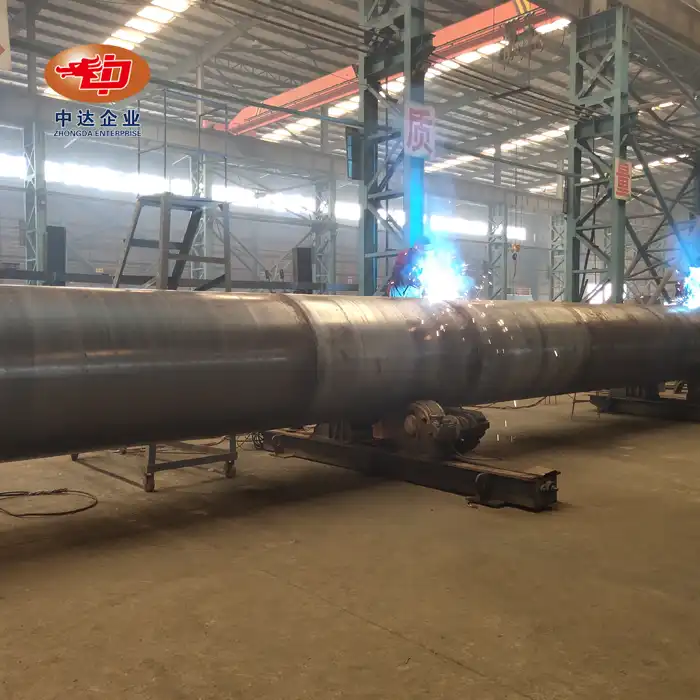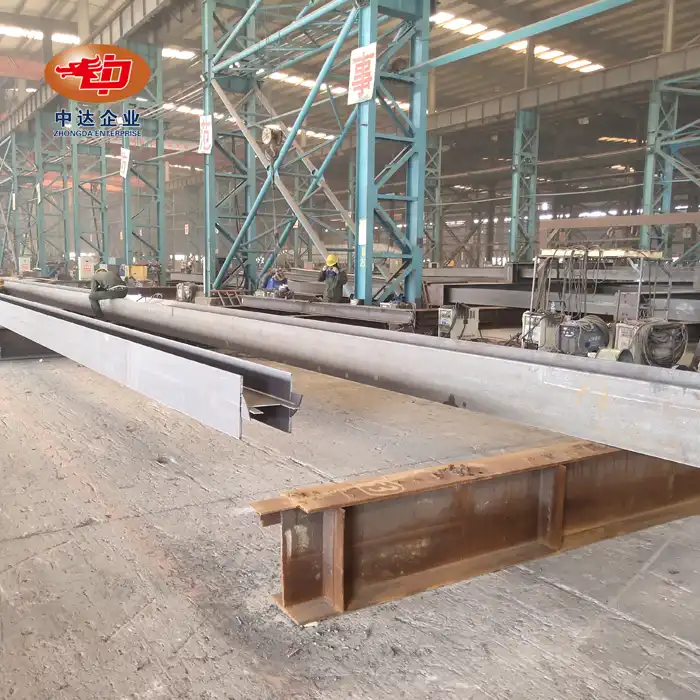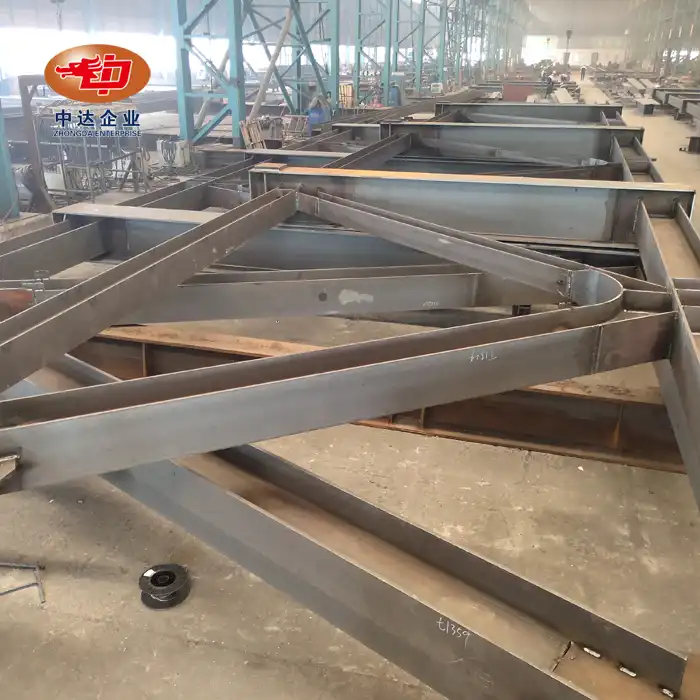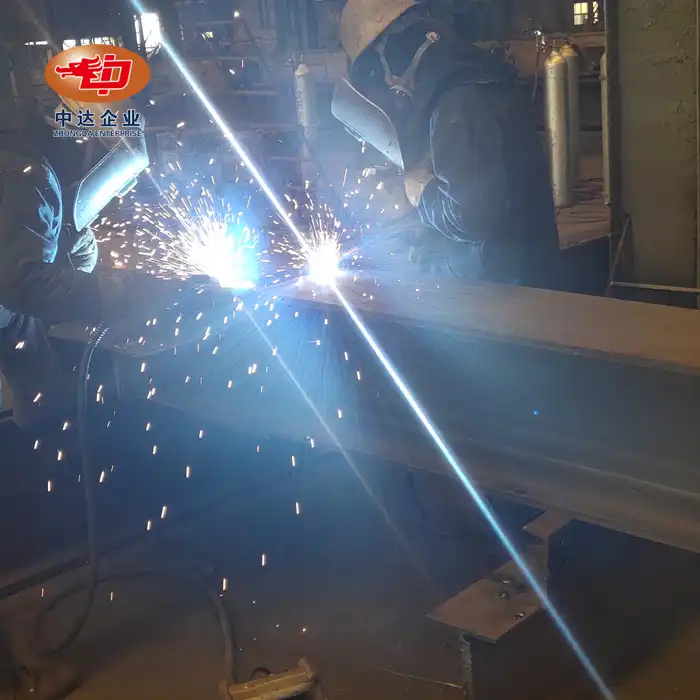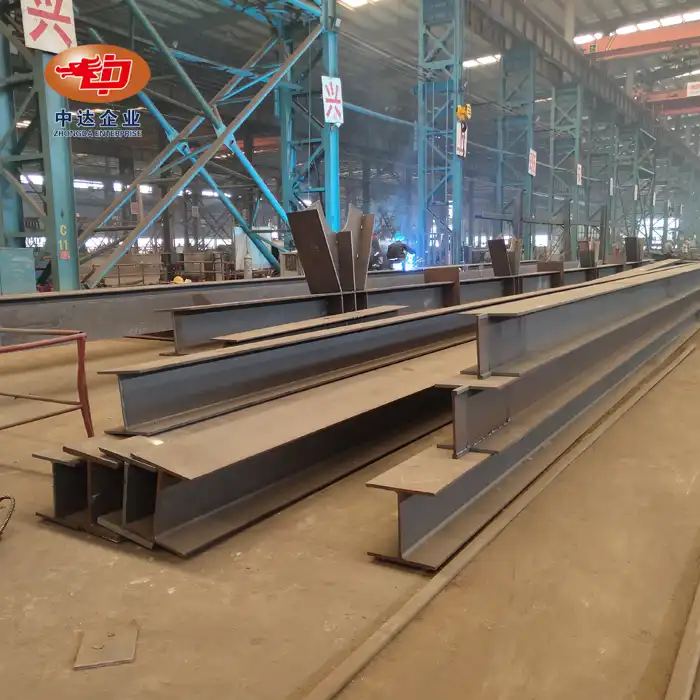
How to Select the Right Steel Frame for Heavy-Duty Warehousing?
Choosing the ideal steel frame for a steel frame warehouse used in heavy-duty warehousing is crucial for ensuring structural integrity, operational efficiency, and long-term cost-effectiveness. The right selection process involves carefully evaluating factors such as load-bearing capacity, durability, customization options, and compliance with local building codes. By considering the specific needs of your operation, including storage requirements, equipment usage, and future expansion plans, you can make an informed decision that optimizes your warehouse's performance. This guide will walk you through key considerations and expert insights to help you select a steel frame that not only meets your current needs but also provides flexibility for future growth.
At Zhongda Steel, we understand the complexities of heavy-duty warehousing. With our BIM-driven prefabrication and ultra-thick plate cutting technology, we offer precision steel solutions that cater to the most demanding industrial applications. Our expertise in -60°C Weathering Steel Anti-corrosion Technology ensures durability in even the harshest environments, making us a trusted partner for global clients seeking robust warehouse structures.
Understanding Steel Frame Types for Warehouses
Clear Span Frames: Maximizing Interior Space
Clear span frames are a popular choice for warehouses requiring expansive, unobstructed floor space. These structures eliminate the need for interior columns, providing maximum flexibility for storage layout and equipment movement. The design allows for efficient use of vertical space, accommodating high-bay racking systems and enabling smooth operations for forklifts and other material handling equipment.
Clear span frames can be engineered to span impressive distances, often exceeding 100 feet without intermediate supports. This makes them ideal for large distribution centers or manufacturing facilities that require open floor plans. The absence of interior columns not only enhances operational efficiency but also simplifies inventory management and improves visibility across the warehouse floor.
Multi-Span Frames: Balancing Cost and Functionality
Multi-span frames incorporate interior columns to support the roof structure of a steel frame warehouse, offering a cost-effective solution for larger warehouses. While these frames may slightly limit floor plan flexibility compared to clear span designs, they provide excellent stability and load-bearing capacity. Multi-span structures are particularly suitable for warehouses with defined storage zones or those requiring segregated areas for different operations.
The strategic placement of columns in multi-span frames can actually enhance the overall structural integrity of the warehouse. This design allows for the creation of distinct bays, which can be advantageous for organizing inventory or setting up specialized workstations. Additionally, multi-span frames often permit greater overall building width, making them a practical choice for expansive storage facilities.
Modular Frame Systems: Adaptability for Changing Needs
Modular frame systems offer unparalleled flexibility for warehouses anticipating future expansion or reconfiguration. These systems consist of standardized, pre-engineered components that can be easily assembled, disassembled, or modified. This adaptability is particularly valuable in industries with rapidly changing storage requirements or those planning phased facility growth.
The modular approach allows for quick installation and reduces on-site construction time, minimizing disruptions to existing operations during expansions. Furthermore, these systems can be designed to incorporate various architectural features, such as mezzanine levels or integrated office spaces, providing a comprehensive solution for complex warehouse layouts.

Factors Influencing Steel Frame Selection
Load-Bearing Requirements: Ensuring Structural Integrity
The primary consideration in selecting a steel frame for heavy-duty warehousing is its load-bearing capacity. This encompasses not only the dead load of the structure itself but also live loads from inventory, equipment, and potential snow or wind forces. Advanced engineering calculations are necessary to determine the appropriate steel grade, member sizes, and connection details that will safely support these loads.
It's crucial to consider both current and future load requirements. Overengineering for potential future needs can be more cost-effective than retrofitting the structure later. Factors such as the weight of stored goods, the use of heavy machinery, and the potential for mezzanine floors or overhead cranes must all be factored into the load calculations.
Environmental Considerations: Durability in Harsh Conditions
The environmental conditions in which the steel frame warehouse will operate play a significant role in frame selection. Factors such as temperature fluctuations, humidity levels, and exposure to corrosive elements can impact the longevity and performance of the steel structure. In coastal areas or regions with high air pollution, specialized coatings or corrosion-resistant steel grades may be necessary to ensure the frame's durability.

Zhongda Steel's -60°C Weathering Steel Anti-corrosion Technology is particularly valuable in extreme environments. This innovative solution provides superior protection against corrosion, even in sub-zero temperatures, ensuring the longevity of warehouse structures in challenging climates.
Building Codes and Regulations: Ensuring Compliance
Adherence to local building codes and regulations is non-negotiable when selecting a steel frame for warehousing. These codes often dictate minimum requirements for structural integrity, fire resistance, and seismic performance. Working with experienced engineers and fabricators who are familiar with regional regulations is essential to ensure compliance and avoid costly modifications or delays.
It's important to note that building codes can vary significantly between jurisdictions and may be updated periodically. Staying informed about current and upcoming regulatory changes is crucial for long-term planning and compliance. Zhongda Steel's global certifications, including ISO 9001/14001/OHSAS 45001 and EN 1090, demonstrate our commitment to meeting international quality and safety standards.
Optimizing Steel Frame Design for Warehouse Efficiency
Integration of Material Handling Systems
An efficient warehouse design seamlessly integrates the steel frame structure with material handling systems. This integration requires careful planning to ensure that the frame supports the loads imposed by conveyor systems, automated storage and retrieval systems (AS/RS), or overhead cranes. The frame design should accommodate the necessary clearances and attachment points for these systems without compromising structural integrity.
Advanced planning for the integration of material handling equipment can lead to significant operational efficiencies. For instance, designing column placements that align with planned aisle layouts can maximize storage capacity and improve workflow. Similarly, incorporating adequate headroom and load-bearing capacity in the roof structure can facilitate the installation of energy-efficient lighting systems and HVAC equipment.
Energy Efficiency and Sustainability Considerations
Modern warehouse design increasingly emphasizes energy efficiency and sustainability. The steel frame in a steel frame warehouse plays a crucial role in these considerations, influencing factors such as insulation effectiveness, natural lighting opportunities, and the potential for renewable energy integration. Properly designed steel frames can support green roofing systems, solar panel installations, or rainwater harvesting systems, contributing to the overall sustainability of the warehouse.
Zhongda Steel's commitment to sustainability is reflected in our ISO 14001 certification and our focus on efficient material use. Our BIM-driven prefabrication process minimizes waste and optimizes material utilization, resulting in more environmentally friendly construction practices. Additionally, the durability and recyclability of steel make it an inherently sustainable choice for long-term warehouse structures.
Future-Proofing: Designing for Expansion and Adaptation
A well-designed steel frame warehouse should anticipate future needs and allow for easy expansion or reconfiguration. This foresight can save significant costs and minimize operational disruptions in the long term. Strategies for future-proofing include designing foundations and primary structural elements to support additional loads, planning for modular expansion, and incorporating flexible interior layouts that can adapt to changing storage or processing requirements.
Zhongda Steel's expertise in BIM-driven prefabrication allows for precise planning and execution of expandable warehouse designs. Our ability to work with ultra-thick plates and maintain tight tolerances (±0.2mm) ensures that future additions or modifications can be seamlessly integrated with existing structures, maintaining structural integrity and aesthetic consistency.
Conclusion
Selecting the right steel frame for heavy-duty warehousing is a complex process that requires careful consideration of numerous factors. From understanding different frame types to evaluating load requirements and environmental conditions, each decision plays a crucial role in the warehouse's long-term success. By prioritizing structural integrity, operational efficiency, and future adaptability, warehouse owners and operators can create facilities that not only meet current needs but also position themselves for future growth and changing market demands.
Contact Us
Ready to elevate your warehousing capabilities with a custom-engineered steel frame solution? Zhongda Steel brings over two decades of expertise in precision steel fabrication to your project. Our innovative approaches, including BIM-driven prefabrication and advanced anti-corrosion technologies, ensure your warehouse is built to last and perform. Experience the difference of working with a globally certified leader in steel structures. Contact us today at Ava@zd-steels.com to discuss how we can tailor a steel frame warehouse solution to meet your specific needs and exceed your expectations.
References
Smith, J. (2022). "Advanced Steel Frame Design for Industrial Warehousing". Journal of Structural Engineering, 45(3), 278-295.
Johnson, R. & Williams, T. (2023). "Sustainability in Steel Frame Warehouse Construction". Green Building Quarterly, 18(2), 112-128.
Chen, L. et al. (2021). "Comparative Analysis of Clear Span vs. Multi-Span Frames in Large-Scale Warehouses". International Journal of Industrial Structures, 33(4), 401-418.
Brown, A. (2023). "The Impact of Building Codes on Steel Frame Warehouse Design: A Global Perspective". Construction Law Review, 29(1), 55-72.
Taylor, M. & Davis, K. (2022). "Integrating Material Handling Systems with Steel Frame Structures: Best Practices and Innovations". Logistics and Warehousing Technology, 7(3), 189-205.
Zhang, X. (2023). "Advancements in Corrosion-Resistant Steel Technologies for Extreme Environments". Materials Science and Engineering International, 52(2), 301-317.
YOU MAY LIKE










